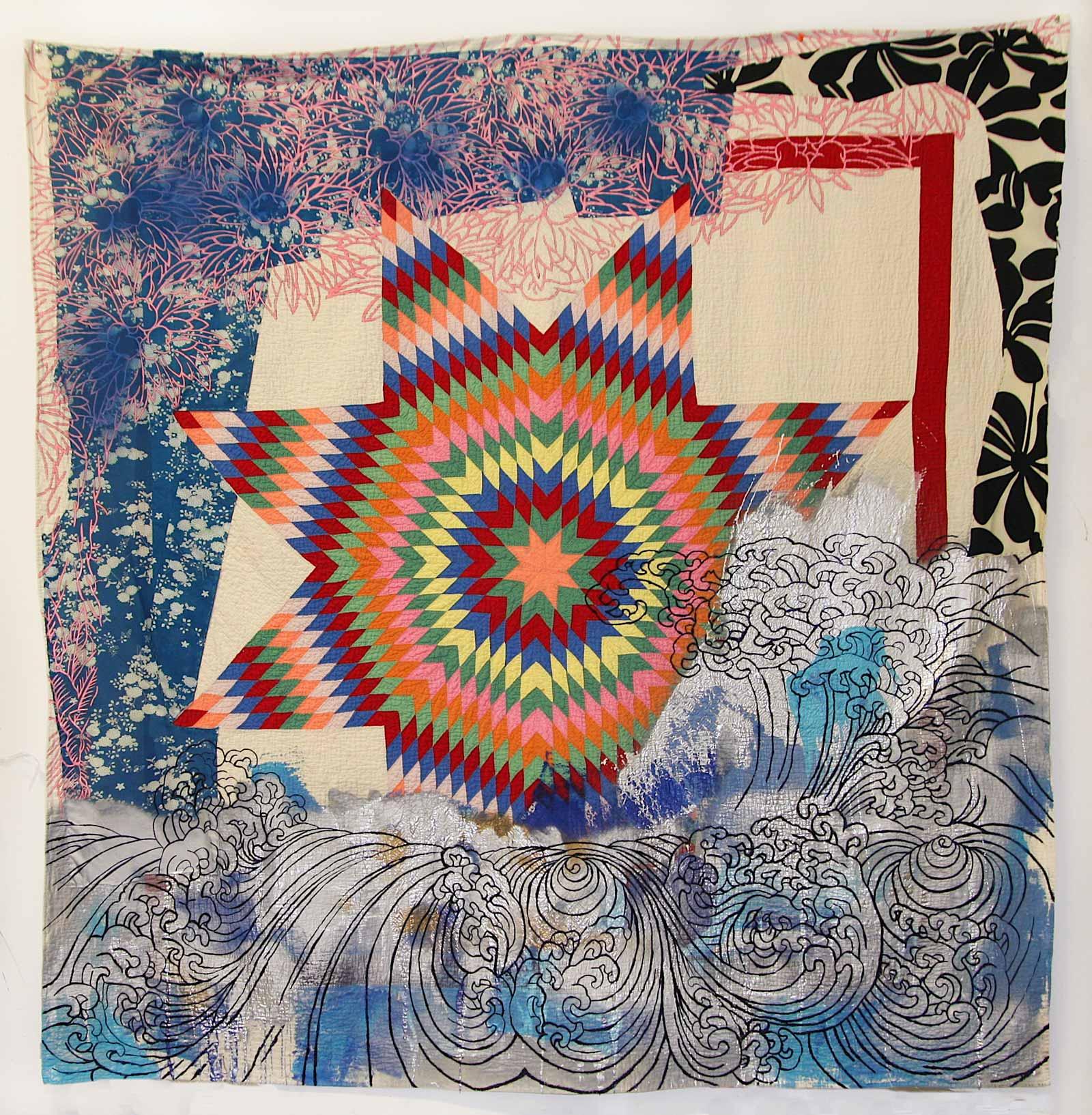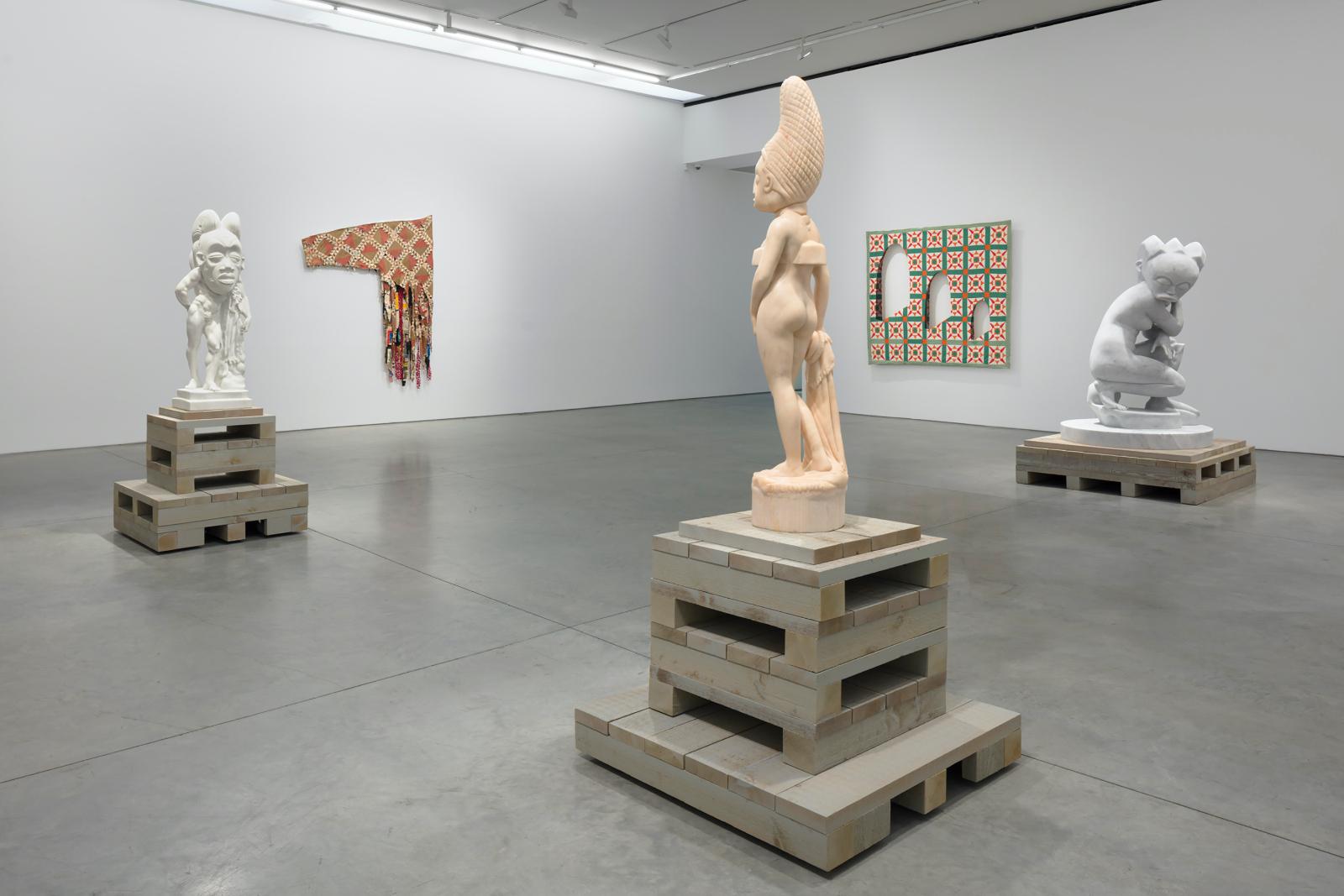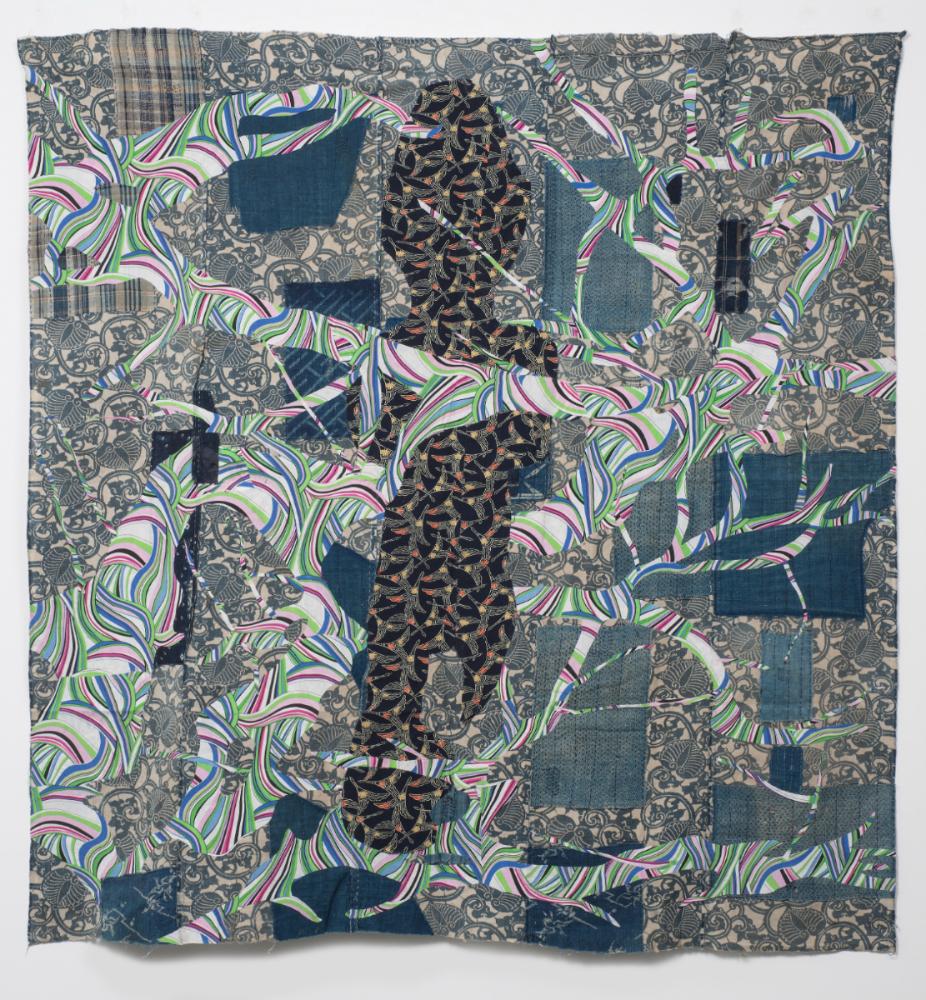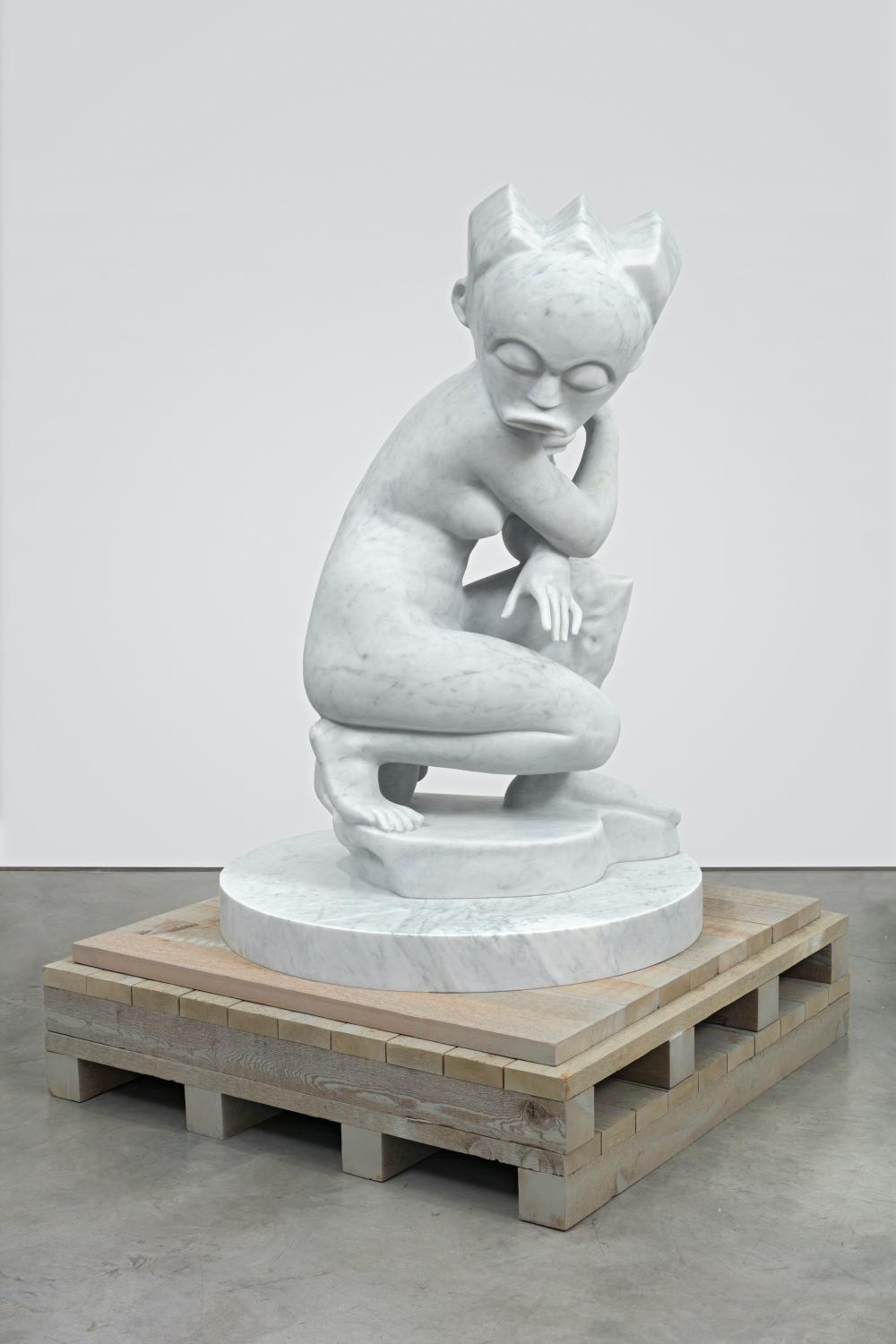Paul Laster: You once told me that seeing the traveling show of the Gee’s Bend quilters motivated you to consider using quilts in your work. Can you share that moment of inspiration and tell us how you started working with textiles?
Sanford Biggers: As a grad student I was admitted into the painting program at the School of the Art Institute of Chicago (SAIC), but during my tenure there I did no painting at all. I had lost my interest in painting and strictly did installation art, sound, video, and sculpture. When I saw The Quilts of Gee’s Bend show at the Whitney Museum in 2002 several things sparked my interest—the aesthetics of the quilts on their own and then their relationship to painting and the Whitney’s own history of showing mostly male painters, which made it a deeply political show for me. I started looking more intently at quilts, even though I had grown up with them around me. I had already been inspired by the work that I had seen in the SAIC’s fiber department, where I thought some of the most interesting work was being made because it transcended textiles to embrace other genres. And when I read about quilts supposedly being used by the Underground Railroad as signposts, signifiers, and maps, I imagined Harriet Tubman as an astronaut reading the stars, which melded into a sort of Afrofuturist, cosmological, but also very terrestrial type of experience. That became my basis for starting to work with quilts.








































